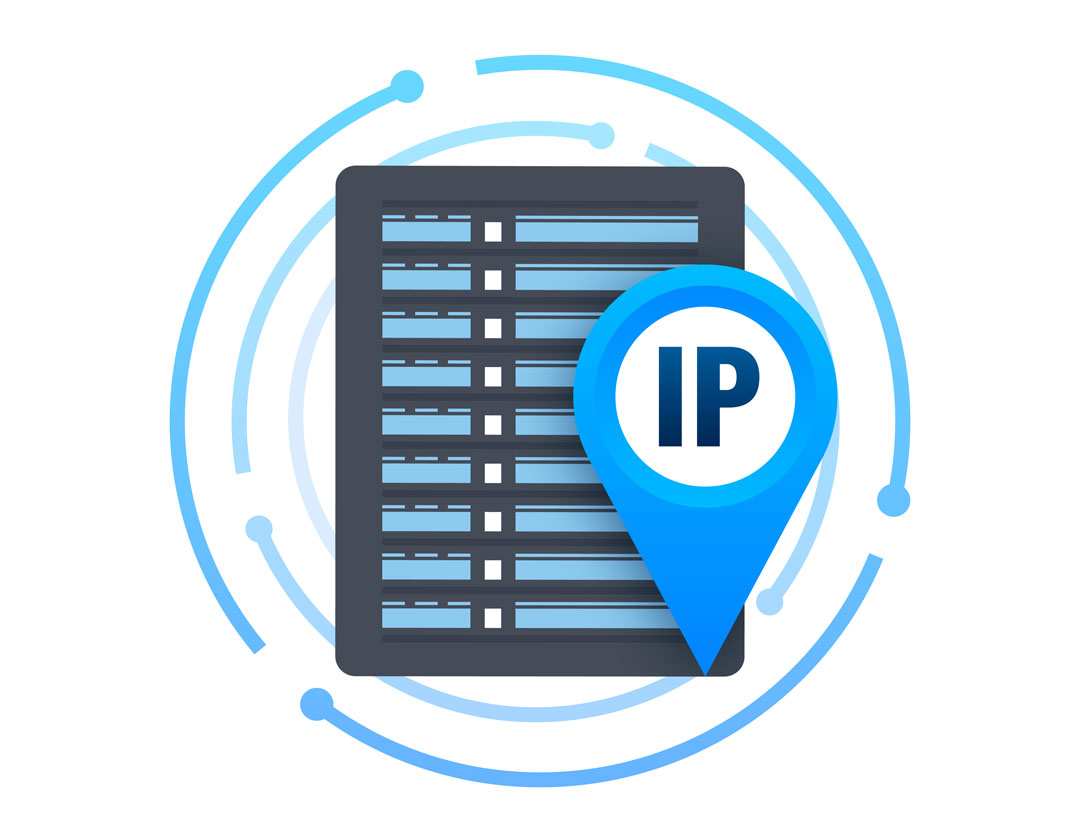An Introduction To Rotating Proxies
You can choose from many proxies when looking for a platform that can help you gather online data. Proxies are also helpful when trying to keep your online connections private while concealing your identity. One of the best options when searching for these proxies is rotating ones.
But what are rotating proxies, and how do they work? A rotating proxy is a proxy server that moves your Internet Protocol or IP address to a new location after each connection or after a predefined period. This setup keeps other parties from quickly detecting your IP address and data, meaning you’re less likely to be blocked from different places.
The benefits of rotating proxies are plentiful, as you can use them to get online for web scraping or research purposes. You’ll see in this guide that rotating proxies can be very effective in helping you stay private while online. This proxy rotation guide also includes a look at how these proxies differ from static or datacenter options that might go faster but are still risky to use.
What Are Rotating Proxies?
Let’s start our dive into what are rotating proxies by looking more into what they are. A rotating proxy is a proxy server that consistently changes the user’s IP address during a connection. The address is always different after each connection or after a particular timeframe.
The IP you use will show where you’re coming from and what device you use to get online. Having multiple IPs from different connection types will help you in gather online data, plus you won’t be suspected as being from one place trying to collect the same data many times over.
A rotating proxy can be either request-based or time-based. A time-based proxy will change the IP address after a few minutes or hours or whatever timeframe you choose. A request-based option changes the address following each request you send to a server to gather a website or something else.
The most valuable part of having a rotating IP is that you’re at a lower risk of blocking. Since it’s hard for a server to spot the same IP address for a while, you’re not likely to be blocked by a site for using a proxy. You’re also keeping your actual IP hidden from other parties, adding to your security while online. These advantages are part of why rotating IPs are essential for many work purposes.
How Rotating Proxies Work

As the definition shows, a rotating proxy is effective in providing security. But how do rotating proxies work?
- Before getting online, you’ll select whether you want to use a time or request-based proxy.For time-based proxies, you can select a particular timeframe from a few minutes to a few hours. The timing or request preference can be programmed into your proxy using a suitable programming language.
- When you get online, you’ll start with an IP address assigned to your platform.
This IP address differs from the one you normally use at your site. The address can also be relative to a particular geographic location as necessary, especially if you’re trying to avoid geoblocks. - Your proxy will switch you over to a new IP address after each request or when a particular timeframe elapses.
The IP pool you’ll use can be configured based on your preferences. You can select any location or device type you want, although the options will vary depending on who provides you with rotating proxy support. - The IP address will keep changing at the right times as long as you are online.
This process for using rotating proxies for web scraping is easy to follow. You won’t have to worry about configuring your connection much after you handle the initial setup.
Benefits of Rotating Proxies
 You’ve got the concept of a rotating proxy explained, so now we can look at the benefits of these proxies and how they’re so valuable:
You’ve got the concept of a rotating proxy explained, so now we can look at the benefits of these proxies and how they’re so valuable:
- The risk of your IP address being caught will be minimal. Since you’re not using the same IP address during a visit, you’re not going to be traced as well.
- You can use various IP addresses from around the world. You could request IP addresses in particular locations to help you avoid geoblocks. The general variety of addresses available is particularly viable, as you’ve got a diverse array of addresses to keep you from being traced.
- Your identity will remain hidden with a proxy. Your actual IP address will not be exposed to outside parties. Others will only see the IP that links to your setup.
- You don’t have to worry about CAPTCHAs or other protective measures some websites might use. Many websites will use CAPTCHAs and other features to verify the identities of some IP addresses. Your proxy will keep you from being stopped by these annoying features.
It’s easy to get your proxy installed. You can program your proxy in Java or Python, among other programming languages. Find more about rotating proxies providers from our article – Compare the Best Rotating Proxies: Speed and Security.
Common Use Cases For Rotating Proxies
Having rotating IP addresses is helpful when you’re looking to keep your identity safe while online. You can use a rotating proxy for various reasons:
- You can send requests to a website through multiple IPs. You could work with thousands of addresses when using rotating residential proxies. This effort helps confirm that your data is going through to a site regardless of the geographic location.
- You can confirm that ads are showing up in certain places. You can change IP address locations and see that the ads you’re producing are appearing in the spots where you want them to be.
- Web scraping is a common practice for rotating proxies. Web scraping involves gathering data from websites. You can track different price changes and advertising shifts through web scraping, and a rotating proxy improves how well you can conduct this practice.
- It’s also easy to handle sensitive data through a proxy. Since your personal data isn’t exposed while using a rotating proxy, you’re not at risk of harm when completing your work.
- You can also test how sites load based on the platforms you use. Sometimes, it takes longer for sites to load on IPs from particular devices. You can use rotating proxies to see how well different connections respond to your requests.
Rotating vs. Static Proxies
 One point you might notice when looking at rotating proxies is that they’re similar to static proxies. But there’s a sizeable difference between the two, as this look at rotating proxies vs. static proxies shows.
One point you might notice when looking at rotating proxies is that they’re similar to static proxies. But there’s a sizeable difference between the two, as this look at rotating proxies vs. static proxies shows.
- Whereas the IP address in a rotating proxy changes, the address for a static proxy is always the same.
Many static proxy setups let you choose a specific IP address, but it’s still the only one you’ll use online. You’d have to switch between addresses throughout your connection. This hassle isn’t a problem when using a rotating proxy that keeps switching things up. - Static proxies tend to be faster.
One advantage static proxies have over rotating ones is that static proxies are faster. Since there’s no need to jump between IPs, it’s easier for the proxy to keep running at a consistent speed. - CAPTCHAs blocks are more likely to occur on static proxies.
The reduced risk of blocks and CAPTCHAs is a substantial benefit of rotating proxies. Some sites might detect your static IP from a proxy if you use it too long. - Rotating proxies work better for large-scale data recovery.
It’s also easier to gather data through web scraping through a rotating proxy. A static proxy is still useful if you’re doing something that requires you to use the same IP for a while. Rotating residential proxies are best for more extensive programs that require extra effort.
Rotating Residential Proxies vs. Datacenter Proxies
Another point to explore involves how rotating residential proxies are different from datacenter proxies. Here are a few differences between these two points:
- Datacenter proxies do not connect to internet service providers or ISPs.
Whereas rotating residential proxies connect to various residential locations via ISPs, datacenter proxies use secondary IPs. You’ll still have access to multiple IPs through a datacenter, although it’s often easier to use residential ones because you’ll have a greater variety. - It’s often easier for outside sites to trust residential proxies.
Since residential proxies link to ISPs, it’s easier for a site to trust someone without risking a ban or block. Rotating proxy security provides both anonymity and the appearance that you’re from a real location. - Datacenter proxies are faster, but it’s all at the cost of security.
Datacenter proxies run faster because the IPs they use are limited and are based on a predefined set the center has established. While the faster speed is convenient, it’s also easier for other sites to detect those proxies. - Sticky sessions can work for both options, but rotating proxies can do more in those sessions.
A sticky session involves getting many client requests out to the same server. A rotating proxy lets you work with many IPs that can submit more requests without risk. A datacenter one can work well, but you may be limited in how much you can send out.
How to Set Up and Use Rotating Proxies
 Now that you understand how rotating proxies prevent bans and help you get online with ease, it’s time to look at how you can get a proxy ready. The process for setting up rotating proxies involves these steps:
Now that you understand how rotating proxies prevent bans and help you get online with ease, it’s time to look at how you can get a proxy ready. The process for setting up rotating proxies involves these steps:
- Start by searching for and hiring a suitable rotating proxy group.
Many proxy providers will help you get access to millions of IPs worldwide. A platform can help you filter different IPs by country or location. The options you’ll have will vary by group, but they can be divided in convenient segments. - You can then insert the necessary proxy setup into your code.
Each provider offers different code setups where you can add signals that prompt your online connections to go to the necessary proxy. cURL, Python, PHP, Java, and Node.js are among the more common codes you can use. This process can work for all devices or computers accessing the proxy. - You can include details on specific proxy locations in your code, although some providers may offer a control panel.
A control panel feature is recommended, as it’s easier to search through a proxy pool through this setup. For cases where you have to handle the content manually, you can insert the IPs you want to use or the range in question into the platform. - The proxy can then be configured based on the rotation time.
You’ll have to specify what is the IP rotation you’ll use in your connection. Whether it’s switching IPs every few minutes or hours or doing so with every request, you can use different connection terms to help you make a setup work well.
The process for completing this setup takes a bit, but it can create a consistent proxy link when planned well. You’ll especially appreciate how easy it is to make it work regardless of the provider.
Conclusion
Rotating proxies for privacy and data collection are helpful because they provide a safer and more secure approach to getting online. Whether it’s to avoid geoblocks or make data scraping easier, you’ll see how rotating proxies prevent bans and improve how you gather data each time you use them.
Be sure when looking for rotating proxies that you have a plan for how you will use them. You can get your proxies running with many IPs, but they should be organized so that everything is easy to follow and link without issue.
Remember that these proxy connections are critical to helping you gather data. Failing to use a proxy could keep you from getting the necessary data you want, so having a suitable setup is vital.



